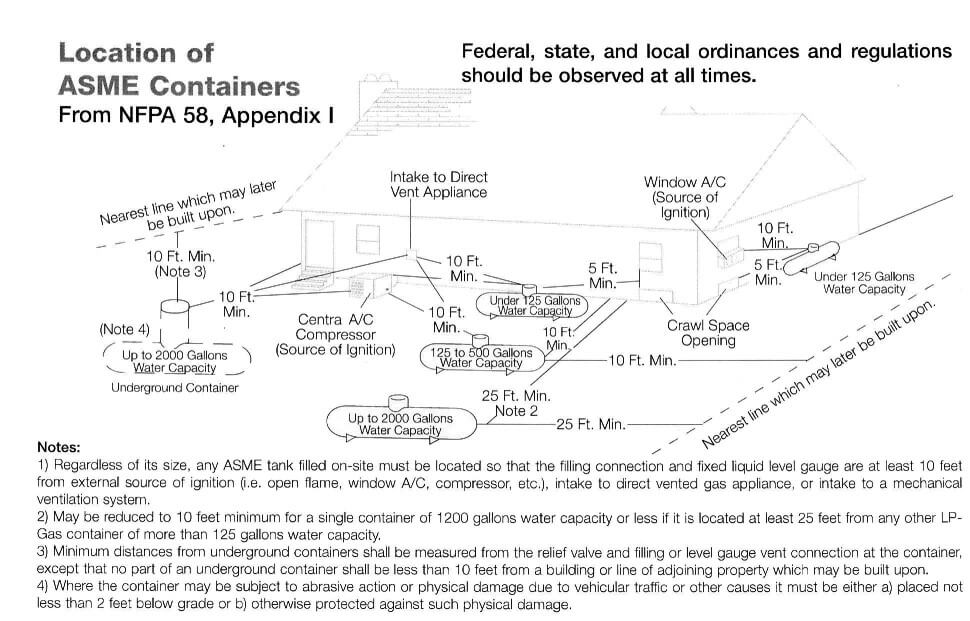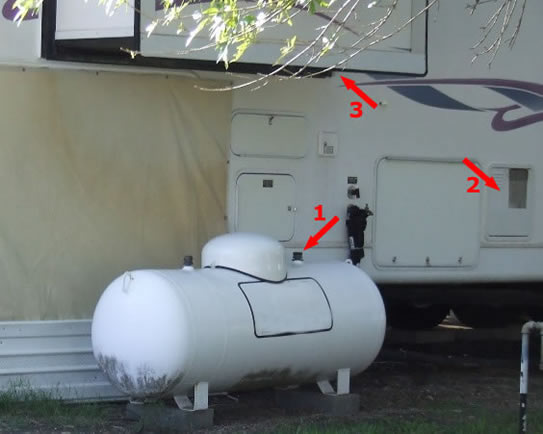Propane Tank Distance Requirements
One of the most visited subjects in the propane industry is distance requirements for propane tanks. Distance rules are applicable to propane tanks and their connections in relation to what surrounds them, whether it's a house or another propane tank. Care and consideration of surrounding buildings, driveways, awnings, house or building openings, property lines and more need to be taken into account when placing a propane tank in a legal and safe location.
Container Distance Requirements
The distance requirements for propane tank locations are dependent upon the LP Gas tank size as well as whether the installation is an above ground tank or an underground tank. Generally, the majority of tanks fall under a ten foot rule with regard to buildings and houses. The standards and rules differ when locations such as playgrounds, parking lots, railroad tracks or other flammable materials are taken into consideration. Propane companies and professionals will ensure propane tank distance requirements are adhered to when installing a propane tank in any location. The graphic below depicts common residential container distances required by the NFPA.

Point of Transfer Distance Requirements
The point of transfer is defined as "the location where connections and disconnections are are made or where LP-Gas is vented to the atmosphere in the course of transfer operations". The transfer of propane during the filling process results in residual liquid release between the tank fill valve and the hose end connection upon completion of transfer. When the hose is unhooked from the tank, liquid is released into the atmosphere. For this reason, the point of transfer is subject to distance requirements.
Relief Valve Distances
Safety relief valves are subject to distance rules for the simple fact that if the relief valve opens allowing propane to vent, the vicinity above and around the relief valve needs to be clear of obstructions and ignition sources. A safety relief valve on an ASME propane tank, if fully activated, will vent propane vertically up and for this reason, propane tanks have to be installed out from under an awning or part of a building overhang.
Unsafe Propane Tank Distance Example
The picture of the propane tank below illustrates the dangers of unsafe distances regarding relief valve proximity. The arrow labeled 1 is the propane safety relief valve. Arrow number 2 is a hot water heater. Arrow number 3 is the bed of an RV slide-out. If the relief valve were to fully open, the propane stream would be directly underneath the bed of this RV slide-out. If the relief valve opened and propane came in contact with the hot water heater flame (arrow #3), a dangerous situation would present itself immediately. For these reasons, and many others, propane tanks, points of transfer and safety relief valves are subject to distance requirements for the safety of propane consumers.

